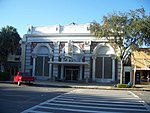St. Petersburg Police Department

The St Petersburg Police Department (SPPD) provides crime prevention and public safety services for the city of St. Petersburg, Florida. The department was created in 1903. The St. Petersburg Police Department has an authorized strength of 550 sworn officers and 212 civilian support staff. The department serves the fifth largest city in the state of Florida, with a population of 250,000. The St. Petersburg Police Department is one of over 1,000 law enforcement agencies in the United States accredited by the Commission on Accreditation of Law Enforcement Agencies (CALEA). Anthony Holloway is the chief of police. The department has specialized units, both uniformed and undercover, to target specific public safety issues within the city (i.e., auto thefts, violent crime). The department uses community outreach programs like Park Walk and Talk, Facebook, Twitter, and a tip 411 app to gather information from the community and address specific concerns.
Excerpt from the Wikipedia article St. Petersburg Police Department (License: CC BY-SA 3.0, Authors, Images).St. Petersburg Police Department
13th Street North, Saint Petersburg
Geographical coordinates (GPS) Address Nearby Places Show on map
Geographical coordinates (GPS)
| Latitude | Longitude |
|---|---|
| N 27.77222 ° | E -82.65189 ° |
Address
Saint Petersburg Police
13th Street North
33705 Saint Petersburg
Florida, United States
Open on Google Maps









